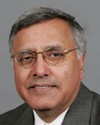Good afternoon. Thank you very much for inviting us to present today. We're honoured.
My name is Kelly Murumets. I'm the president and CEO of ParticipACTION. We are the national voice of physical activity and sport participation in the country. Our vision is that Canadians will be the most physically active people on earth, and I will tell you that I jump out of bed every morning, I love my job, and I'm jazzed to be the leader of an organization with that kind of mandate.
Some of you will remember ParticipACTION from when you were kids. This is how I know how old you are. If you remember the 60-year-old Swede, you're a wee bit older than I am. If you remember the flexed arm hang, you're my age. If you remember Hal and Joanne, you're a wee bit younger. It's an iconic brand. It has been around for more than 30 years. More than 88% of Canadians between 35 and 55 years of age know our brand, and 80% of all Canadians know our brand.
That we're back is a fantastic thing. The reason we're back? Not so fantastic.
This afternoon I'd like to take you through stats that will knock your socks off, the consequences of physical inactivity in the country, what we believe to be the solution—and it's multi-faceted and complex—what other countries are doing, and tell you that ultimately leadership is our legacy, so all hope is not lost.
For stats that will knock your socks off, more than 50% of Canadians are deemed physically inactive. Only 7% of the kids in our country meet the daily physical activity guidelines. According to a recent CHMS survey, our kids are fatter, rounder, weaker, and less flexible than their parents were at their age. We know that childhood obesity rates have tripled in the last three decades. We also know that our kids spend on average six hours a day on screens. Multiplied by seven, that's as much time on screens as their parents spend in their jobs.
The consequences are dire. Twenty-five chronic diseases are directly linked to physical inactivity. We know that kids who are more active are smarter, happier, and healthier. We know they have better self-esteem and better mental health and are better team players. They're less prone to bullying and other negative behaviours. They eat in a healthier way and they're less likely to smoke or to engage in early sexual activity.
But forget the social and health benefits: let me just talk about the economics. I know that these are old data, but in 2001, $5.3 billion was directly attributable to physical inactivity. We know from the Conference Board of Canada that Canada could save $76 billion over the next 10 years by tackling the five main risks of heart disease, physical inactivity being one of them.
We know that the stats just from Ontario--from TD Bank--show that in 12 years' time, if we continue on the same trajectory, health care costs will account for 70% of the Ontario budget alone, leaving 30% for education, infrastructure, and other great services.
As for the solution, it is a complex issue, so it requires a very complex solution. It needs to be multifaceted, as some of my colleagues here mentioned. We need a vision. We need support. We need a champion at the federal government level. This must be owned by someone in the federal government.
We need a fully integrated strategy. ParticipACTION is facilitating a cross-functional, sector-wide process to create a fully integrated strategy for Canada. It's called Active Canada 20/20. FPT governments must be involved. NGOs must be involved. The private sector and academics must be involved. We need the consensus of all of those folks.
The solution must include schools and child care, so we need trained professionals teaching physical education. We need physical activity at schools. We need after-school options that are accessible by all people of all SES levels.
Hospitals and health care facilities must start prescribing prevention and physical activity.
NGOs need programs and facilities at the community level that all folks in Canada can access.
In the built environment, we need sidewalks--it's as simple as sidewalks--bike lanes, parks, and good lighting.
We need research. CSEP is doing phenomenal work in research. We need to fund research so we understand what's going on.
We must fund evaluation. Too often in the not-for-profit sector, we ask if a program is good, and people say yes, it is, because a lot of people come out to it. That doesn't work. We need evaluation with organizations like CFLRI and other academics.
We need social marketing. At ParticipACTION, we have three pillars, one of which is social marketing. Indisputably, social marketing is effective, but it must be sustained.
As well, we need resources. Resources must be deployed to the sector, and they need to be deployed in a strategic fashion, not with a one-year project horizon.
The sector does work collaboratively now. We work unbelievably collaboratively. CSEP and ParticipACTION put out those physical activity guidelines you heard about earlier. Active Canada 20/20 is the consensus of many members of our advisory groups--so again, facilitated by ParticipACTION. But they need money; we can't just operate collaboratively.
You asked in your notes, “What are other countries doing?” In the U.S., Michelle Obama is heading up the “Let's Move” campaign. The U.S. has deployed a billion dollars a year, times 10 years. I know.... Divide us by 10--I know we're not the U.S.--and that's $100 million a year times 10 years. I would tell you that the Public Health Agency of Canada this year told us that we have $800,000 to deploy between 12 organizations. That is a far cry from $100 million a year.
The WHO, the U.S., the U.K., and Australia have created physical activity guidelines. They came out before ours did and all of their research was done by our Canadian researchers. It's ridiculous: we're falling behind and we have an opportunity to be leaders in the world.
That's where I'd like to leave this. Leadership is our legacy. We have an opportunity to vault Canada into a global leadership position. We need to declare healthy active living as part of our country's economic policy. That's what I mentioned to Minister Flaherty most recently. A country that moves is one that thrives.
Healthy active living is the linchpin of a robust economy and a guarantor of a healthier future for the country. If we invest in physical activity now, Canada can lead the world in economic prosperity.
The last note I would like to leave you with is a little bit hokey, but I'll tell you that our kids and our youth, they are our future. I know that sounds hokey, but it's true. We need to invest in the best future possible for them. They are the best and the most important legacy that we can leave.
Thank you.










